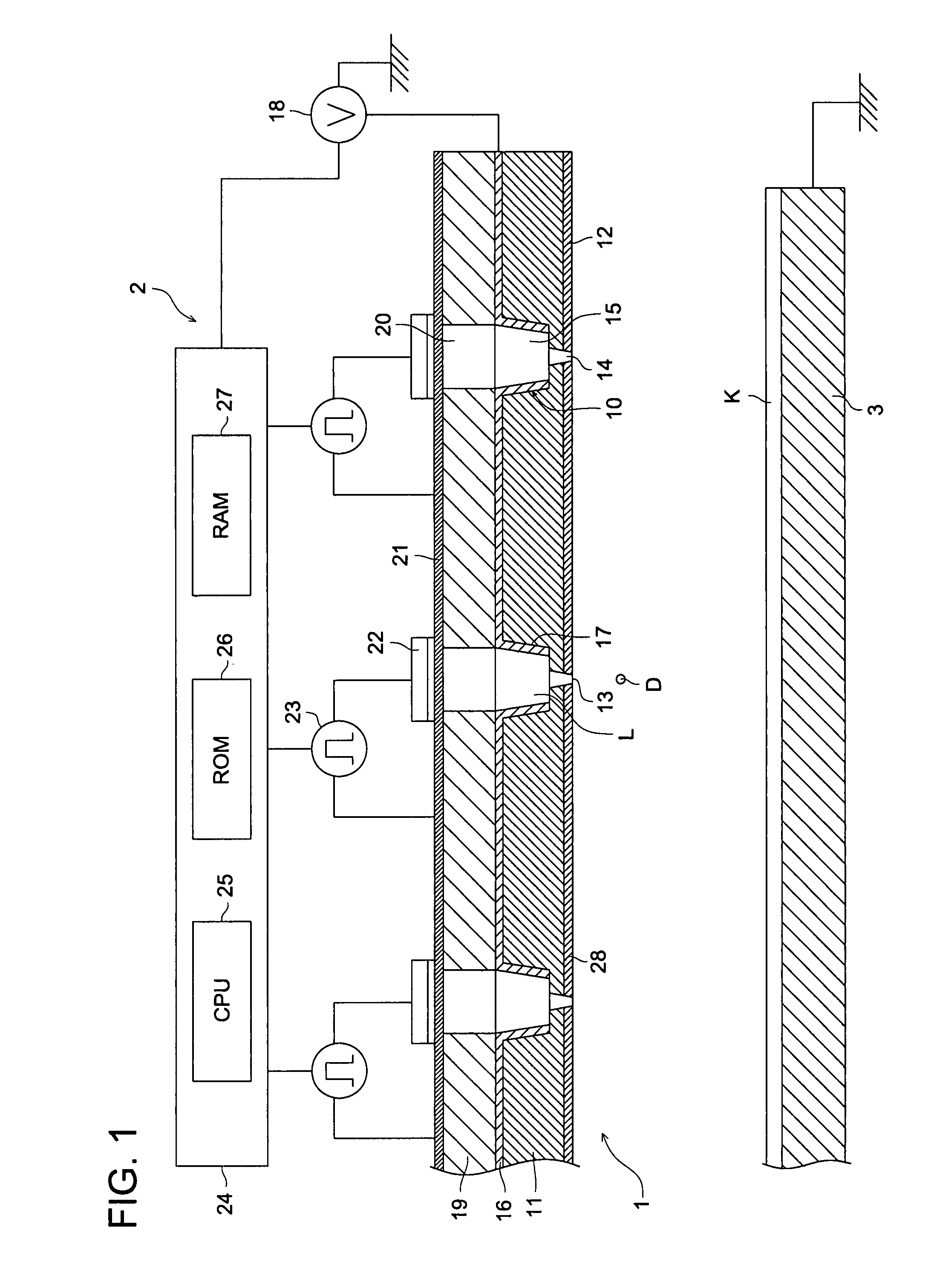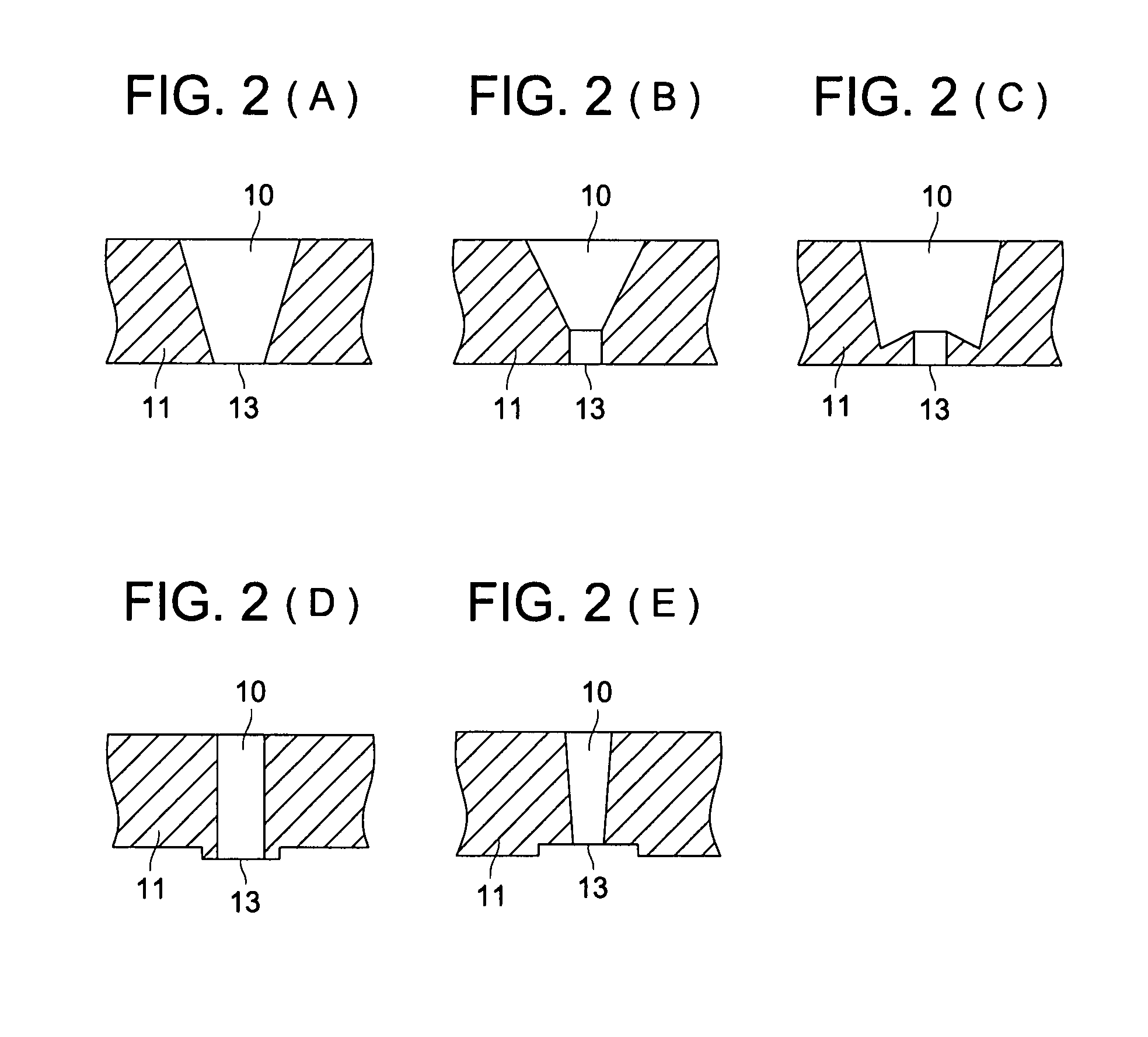Liquid ejection head, liquid ejection device and liquid ejection method
a liquid ejection device and liquid ejection technology, applied in printing, other printing apparatus, etc., can solve the problems of high drive voltage, extreme cost increase of a head and a device, and the inability to realize a device that is suited, and achieve the effect of high viscosity
- Summary
- Abstract
- Description
- Claims
- Application Information
AI Technical Summary
Benefits of technology
Problems solved by technology
Method used
Image
Examples
example
Example 1
[0132]Nozzle plates 11 of liquid ejection head 2 of the present embodiment were actually prepared by using various types of materials, and whether liquid droplet D is ejected from ejection hole 13 of nozzle 10 or not was confirmed by ejecting on base material K.
[0133]The structure of the liquid ejection head 2 was made to be a single-step structure made under the same conditions as the aforesaid experiment conditions wherein a taper angle of nozzle 10 is 4° and small diameter portion 14 and large diameter portion 15 are continuous.
[0134]Further, liquid L1 was prepared as a conductive liquid that contains 52% by weight of water, 22% by weight of ethylene glycol, 22% by weight of propylene glycol, 3% by weight of dye (CI Acid Red 1) and 1% by weight of surfactant, while, liquid L2 was prepared as a conductive liquid wherein 3% by weight of dye (the same as the above) is contained in ethanol and liquid L3 was prepared as a liquid wherein Ag particles are dispersed in tetradeca...
example 2
[0140]Nozzle plates 11 of liquid ejection head 2 of the present embodiment were prepared by changing a thickness of nozzle plate 11 and a nozzle diameter variously, and whether the liquid L1 is ejected or not was confirmed by ejecting on base material K. Further, as a referential experiment, whether the liquid L1 is ejected or not was confirmed under the condition in which the liquid L1 was not ejected, by causing electrostatic voltage to be 3.0 kV.
[0141]Results of the experiments proved to be those shown in the following Table 2. Incidentally, nozzle plate 11 was formed by using polyethylene terephthalate, Lumirror (made by TORAY INDUSTRIES, INC.), described on Table 1.
[0142]
TABLE 2NozzlediameterNozzle plateElectrostaticEjecting of(μm)thickness (μm)voltage (KV)liquid101251.5G151251.5G201251.5NG201253G151001.5G15751.5G15501.5NG15503GG: GoodNG: Not Good
[0143]When comparing the results of the occasion where a thickness of nozzle plate 11 is 125 μm, it is understood from the results of...
PUM
 Login to View More
Login to View More Abstract
Description
Claims
Application Information
 Login to View More
Login to View More - R&D
- Intellectual Property
- Life Sciences
- Materials
- Tech Scout
- Unparalleled Data Quality
- Higher Quality Content
- 60% Fewer Hallucinations
Browse by: Latest US Patents, China's latest patents, Technical Efficacy Thesaurus, Application Domain, Technology Topic, Popular Technical Reports.
© 2025 PatSnap. All rights reserved.Legal|Privacy policy|Modern Slavery Act Transparency Statement|Sitemap|About US| Contact US: help@patsnap.com



